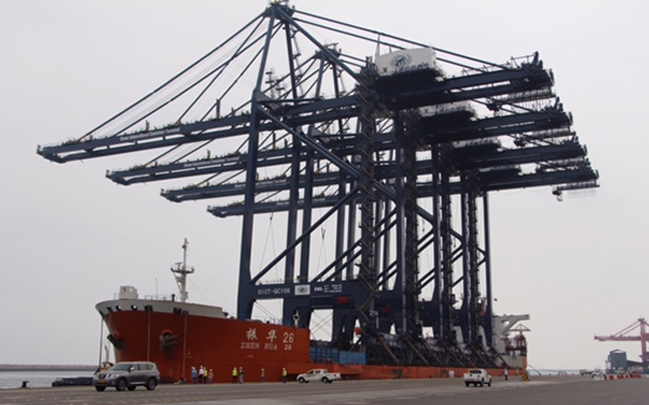This week saw the arrival of four new post-Panamax quay cranes at SOHAR Port and Freezone’s state-of-the-art container terminal, as it continues its next phase of expansion. The facility is jointly owned by Hutchison (HPH) in Hong Kong, the Oman Government, C. Steinweg and other investors, and is operated by Oman International Container Terminal (OICT). In the summer of 2014, OICT shifted it operations to the new Terminal C at SOHAR in preparation for the relocation of all commercial traffic from Muscat’s Port Sultan Qaboos. Last year saw SOHAR handle nearly one million tons of cargo a week, a new record for the Port that only saw its first ship arrive in 2004.
The new cranes arrived by sea after a long journey from Shanghai, where world-leading quay crane specialists ZPMC manufactured them. The highly complex engineering challenge of offloading the cranes began on Monday and will take all week. First, temporary rail bridges were built from ship to shore in order to move the cranes to the quayside. Each crane weighs hundreds of tons, so the transport ship from ZPMC needed to be balanced by water ballast as the cranes were removed in order to keep its height constant above the water line and level with the quayside. With the unpredictability of tide movements and the weather this week, this was a huge challenge that demanded great skill and experience.

The new quay cranes will allow the container terminal to receive even bigger container vessels in future. The huge new cranes have an outreach to serve the very latest 10,000 TEU container ships that already serve SOHAR - and 20.000 TEU mega container ships in the future. The handling capacity for container traffic at OICT in SOHAR has more than doubled in the last two years. SOHAR Port CEO Andre Toet commented: “As more lines from Asia start to make more direct calls to SOHAR, and the size of those container vessels continues to increase, SOHAR Port Authority is actively working together with OICT and our other terminals to increase efficiency and help reduce costs.”
Andre Toet continued: “For example, OICT recently introduced an automated truck appointment system to further reduce turnaround times and our Port Management System (PMS) is a new online platform that allows agents to access and share real-time information on cargo movements. These technologies ultimately generate costs savings that we can pass on right the way along the supply chain and will help make Oman even more competitive as a regional logistics hub for the future.